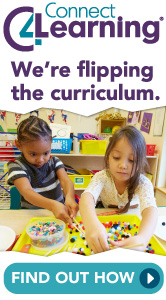The Bare Walls Theory
Anne Frank, The Diary of a Young Girl, 1942
A recent study, reported by NBC News, has found that for young children, adopting a more subdued approach to classroom decoration has merit. The study was one of the first to examine how decorations impact learning. It found that when kindergartners were taught in a highly decorated classroom, they were more distracted and scored lower on tests than when they were taught in a room with bare walls.
"Researchers at Carnegie Mellon University followed a group of 24 kindergartners taught in two simulated classrooms: one with bare walls, the other decorated with commercial materials like presidential photos, science posters and maps, as well as the children’s artwork. During the lessons, children sat on carpet squares in a semicircle facing the teacher, who read aloud from a picture book. They participated in six lessons of five- to seven-minutes each in which the teacher read aloud on topics such as plate tectonics, the Solar System and bugs. After each lesson, the children took multiple-choice picture tests. Lessons were observed and videotaped to monitor how often the children were focused on the teacher or 'off task,' distracted by themselves, other students or the visual environment.
"In the sparse classroom, the kindergartners got distracted by other students or even themselves. But in the decorated one, children were more likely to be distracted by the visual environment and spent far more time 'off task.' Anna V. Fisher, the study’s lead author and an associate psychology professor, said the findings showed that the classroom environment can be distracting and negatively impact learning."
Contributed by Kirsten Haugen
For more information about Exchange's magazine, books, and other products pertaining to ECE, go to www.ccie.com.
|
© 2005 Child Care Information Exchange - All Rights Reserved | Contact Us | Return to Site


